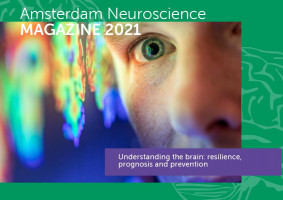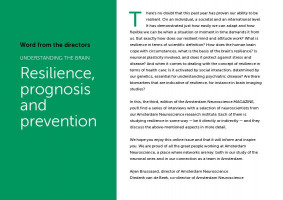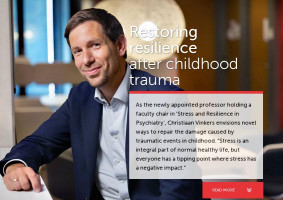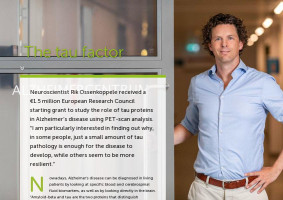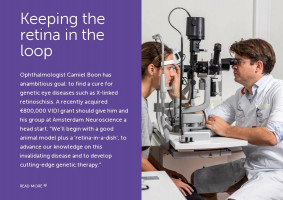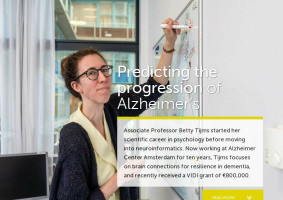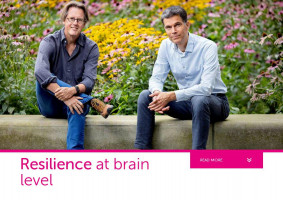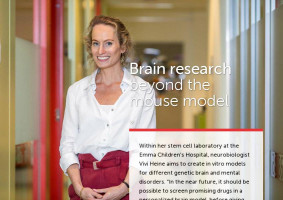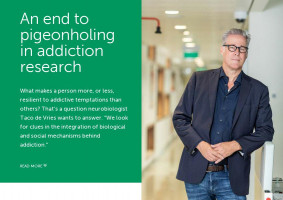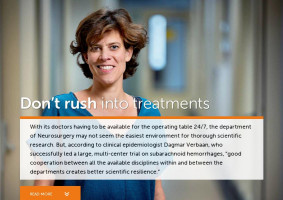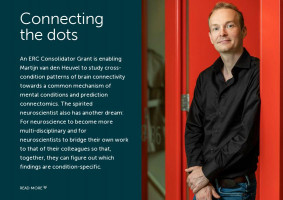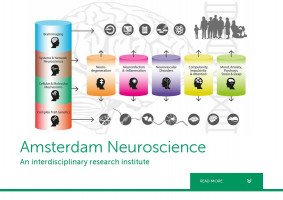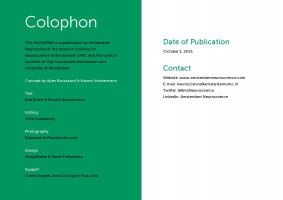During her PhD in neuroinformatics at the University of Edinburgh, Betty Tijms specialized in brain networks, and invented software to analyze gray matter networks in single-subjects using MRI. Now in Amsterdam, Tijms is focusing her interest in Alzheimer’s disease and cognitive decline on investigating early Alzheimer’s, aiming to better understand interindividual differences and predict disease progression. Which, hopefully, will lead to the enhancement of current treatments and potential development of new ones.
From network to biomarkers
“What’s so unique in Alzheimer’s is that we can indicate the disease pathology with two specific biomarkers: amyloid-beta and phospho-Tau,” Tijms says. These two proteins can be measured in the cerebrospinal fluid (CSF), and their concentration provides direct insight into the disease process since they correlate with changes on cellular level. Tijms became interested in studying the CSF proteins as she wanted to look at the biological changes or disruptions and see how these alter over time. Combining network and biomarker information enables her to link gray matter networks with underlying pathophysiological processes.
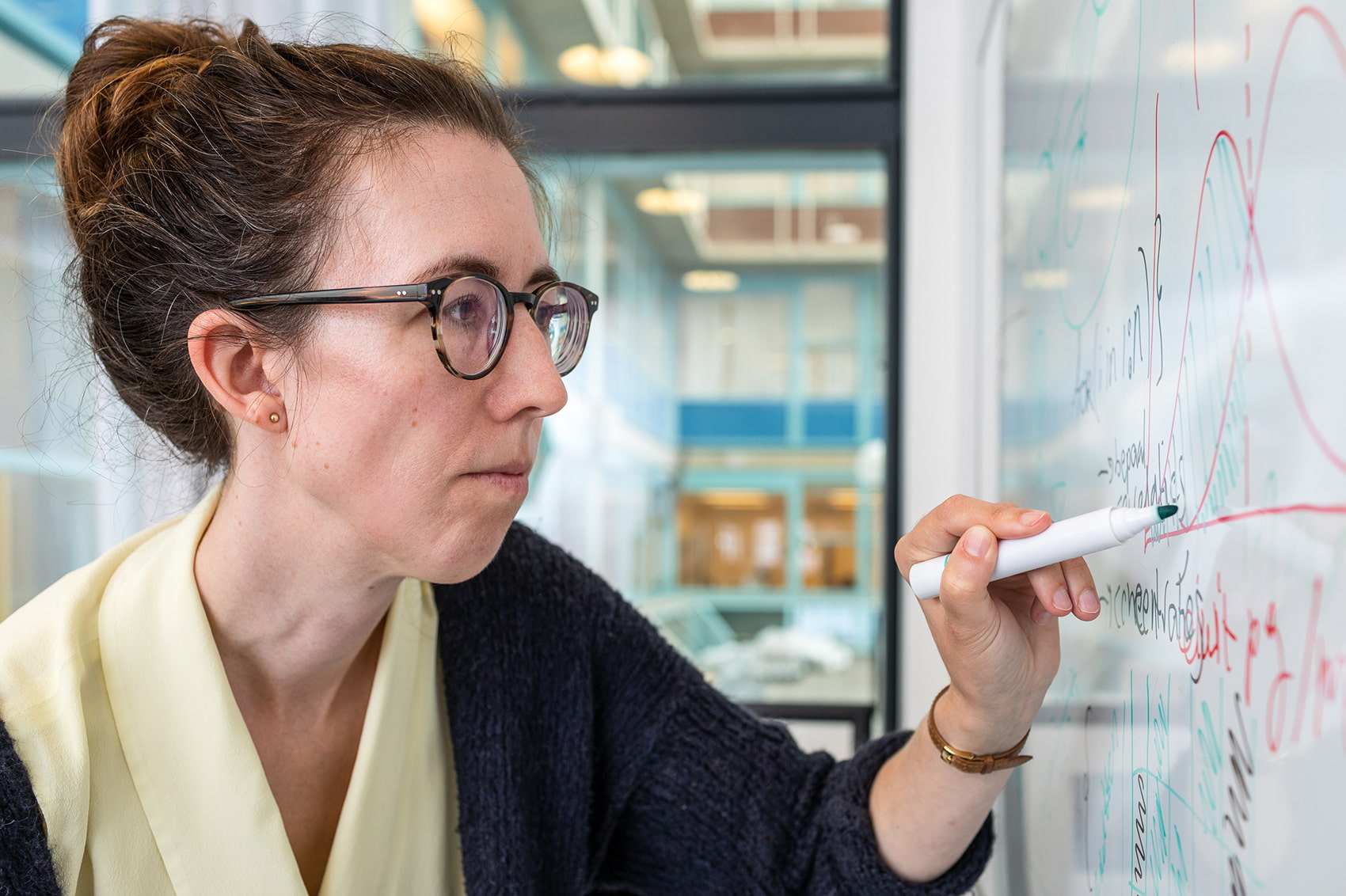
In search of answers
Tijms notes that, in some cases, it takes years before someone develops problems with their cognitive functioning. “What’s more, it seems that individuals with strong brain connections show slower disease progression and might be more resilient to cognitive decline than others,” Tijms says. “These interindividual differences make it hard to compare patients suffering from dementia: Is someone’s brain more stable because of their medication, or because it is more resilient and therefore shows slower decline? We need to know more. Which biological processes contribute to strong brain connectivity? Can we distinguish differences between individuals? Understanding all this will help us find new ways to delay Alzheimer’s disease in the future.” With the help of her VIDI grant, Tijms – together with her colleagues – is now able to expand their line of work in addressing these questions.
Identifying subgroups
The first step towards an individual approach is to try to establish differences within a group of Alzheimer’s patients. With a team of neuroscientists, Tijms has been studying different subgroups based on CSF protein concentrations and found three: one with innate immune system activation, one that shows blood-brain barrier dysfunction, and one with enriched synapse functioning. “We also recently analyzed new data from 600 Alzheimer’s patients and identified the same three subgroups again,” says Tijms. “I believe these different biological backgrounds affect the brain connections in various ways, which could induce different reactions on potential treatments. Therefore, we now want to continue this lead and see if we can match those subgroups to certain therapeutic treatments and their efficacy.” This makes it a perfect time to start collaborating with the pharmaceutical industry, as they can make use of Tijms’ techniques of measuring CSF proteomics to help select participants in clinical trials. Which, in turn, would enable them to measure the effect of a possible drug more accurately.
Personal Alzheimer’s profile
“It will be tremendous to be able to predict disease progression for people with Alzheimer’s on an individual level,” says Tijms. “When someone is diagnosed with Alzheimer’s, we notice that in many cases, the patients are on tenterhooks because the future they face is so uncertain. But if we are able to measure proteins in their CSF, and combine this information with a personal brain connectivity map, we can configurate a personal profile that helps us calculate that particular patient’s disease progression. This sketch of a timeline will be of great importance for them.”
Personal resilience
Alongside resilience in the brain, another thing of great importance – in Tijms’ experience and work – is resilience in oneself. “As a scientist, you get so many rejections, which is sometimes hard to bounce back from and requires a fair bit of flexibility to get over,” she says. “If there’s one piece of advice I’d like to give the next-generation of researchers, it’s this: ‘Persevere, focus on the positive, learn from feedback and stick to what you think is best’.”
Photography: Marieke de Lorijn
